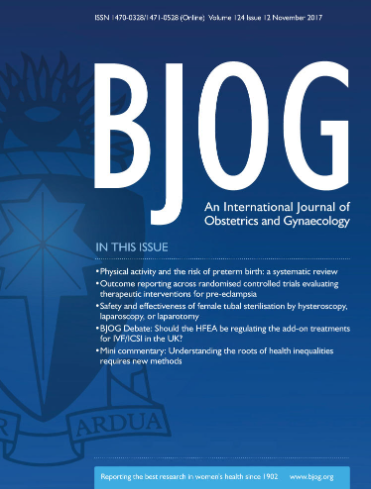Is It Cost-Effective to Induce Labour Early to Prevent Shoulder Dystocia? Evidence From the Big Baby Trial
Abstract
Background
The cost-effectiveness of early induction of labour for suspected large-for-gestational-age foetuses to prevent shoulder dystocia is unknown.
Methods
A within-trial economic evaluation of induction at 38 + 0 to 38 + 4 weeks' gestation for suspected large-for-gestational-age foetuses. Resource use and costs were measured to 6 months postpartum. We estimated incremental cost per case of shoulder dystocia prevented and incremental cost per maternal quality-adjusted life year (QALY) gained. We collected data for planned caesarean sections in a cohort study.
Findings
Mean combined woman and infant costs in the induction arm were £89 (95% confidence interval (CI): −£79, £257) higher than the standard care arm, driven by increased neonatal costs. The incremental cost of preventing one case of shoulder dystocia was £11 879 and the incremental cost per maternal QALY gained was £39 518. The probability of early induction being cost-effective was 0.65 at a cost-effectiveness threshold of £20 000 per case of shoulder dystocia prevented, but 0.36 at a cost-effectiveness threshold of £20 000 per maternal QALY gained. The cohort study found the mean cost was £310 (95% CI: £74, £545) higher in the induction arm than in the planned caesarean group.
Interpretation
Early induction of labour increased neonatal care costs. It is not a cost-effective approach when effects are restricted to maternal QALYs. Planned caesarean section might be cost-saving when compared to early induction, although we did not assess longer-term effects such as an increased risk of repeat caesarean sections. Assessments of long-term effects on the mother and infant should be incorporated into future studies.
Trial Registration: ISRCTN18229892





 求助内容:
求助内容: 应助结果提醒方式:
应助结果提醒方式:


